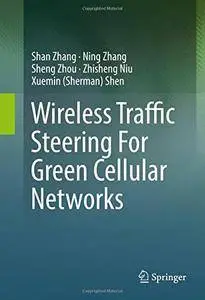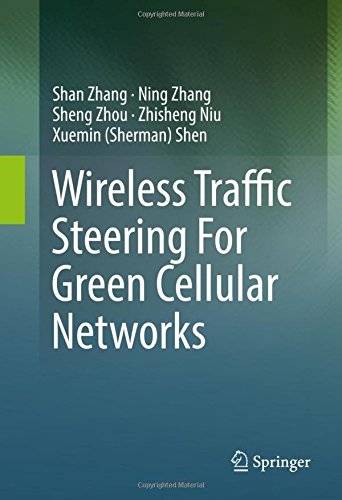Wireless Traffic Steering For Green Cellular Networks
Springer | Signals & Communication | July 3, 2016 | ISBN-10: 3319327194 | 128 pages | pdf | 3.77 mb
Springer | Signals & Communication | July 3, 2016 | ISBN-10: 3319327194 | 128 pages | pdf | 3.77 mb
Authors: Zhang, S., Zhang, N., Zhou, S., Niu, Z., Shen, X.(.
Introduces critical research on energy-efficient traffic steering for green cellular networksPresents a two-stage energy-aware traffic steering scheme
Demonstrates how to optimize the traffic allocated to each cell via an energy-aware traffic steering method for networks with energy harvesting
This book introduces wireless traffic steering as a paradigm to realize green communication in multi-tier heterogeneous cellular networks. By matching network resources and dynamic mobile traffic demand, traffic steering helps to reduce on-grid power consumption with on-demand services provided. This book reviews existing solutions from the perspectives of energy consumption reduction and renewable energy harvesting. Specifically, it explains how traffic steering can improve energy efficiency through intelligent traffic-resource matching. Several promising traffic steering approaches for dynamic network planning and renewable energy demand-supply balancing are discussed. This book presents an energy-aware traffic steering method for networks with energy harvesting, which optimizes the traffic allocated to each cell based on the renewable energy status. Renewable energy demand-supply balancing is a key factor in energy dynamics, aimed at enhancing renewable energy sustainability to reduce on-grid energy consumption. Dynamic network planning adjusts cell density with traffic variations to provide on-demand service, which reduces network power consumption with quality of service provisioning during off-peak hours. With intra- or inter-tier traffic steering, cell density is dynamically optimized with regards to the instant traffic load for conventional homogeneous and multi-tier heterogeneous cellular networks, respectively. This book is beneficial for researchers and graduate students interested in traffic management and future wireless networking.
Number of Illustrations and Tables
2 b/w illustrations, 41 illustrations in colour
Topics
Communications Engineering, Networks
Renewable and Green Energy
Computer Communication Networks
Click Here to Buy the Hardcover from Springer
Click Here for More books



